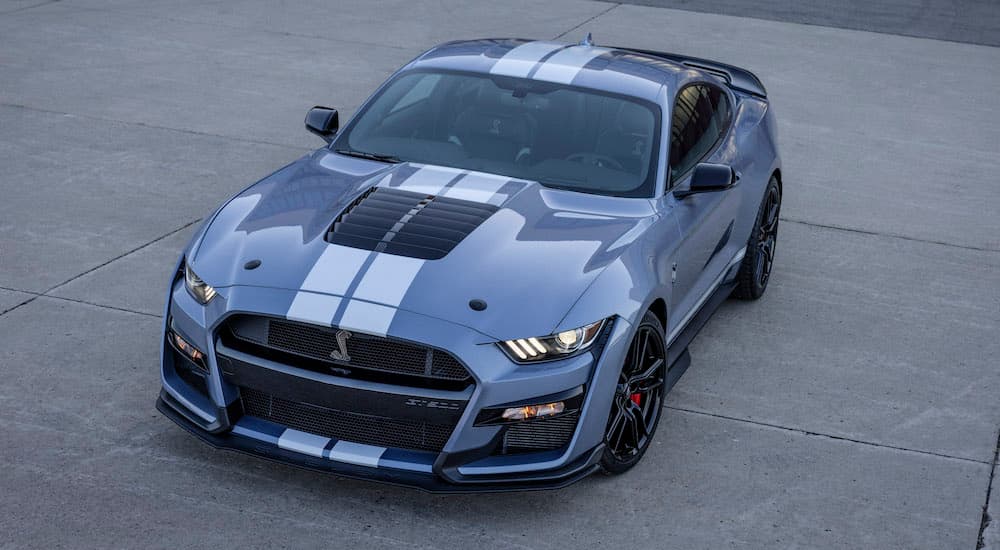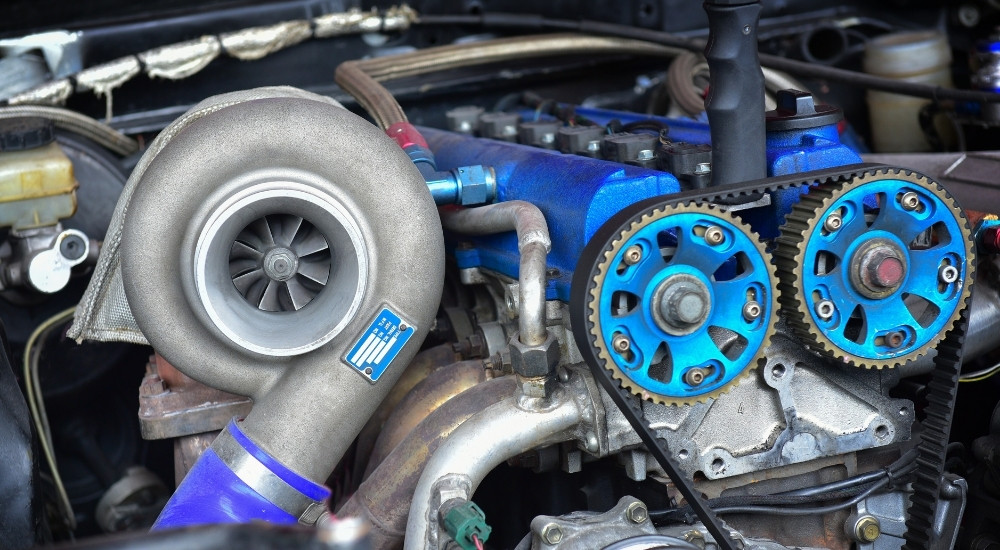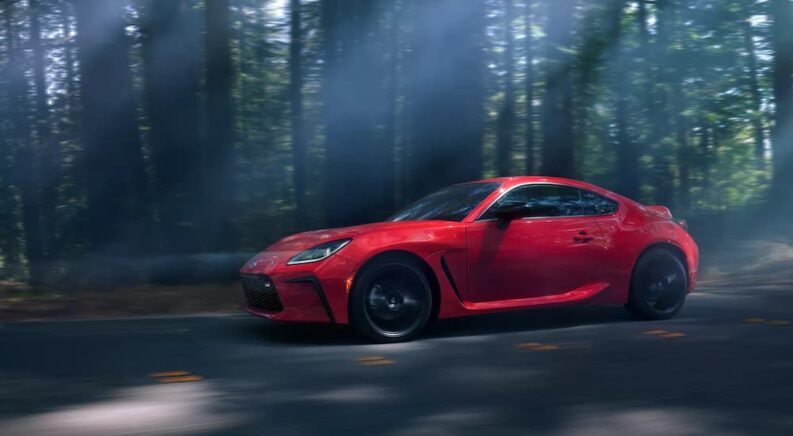Plenty of modern vehicle engines come pre-equipped with a turbocharger or supercharger to crank up the horsepower and efficiency. I’m not just talking about the latest muscle and sports cars, either. The Honda Accord, Jeep Compass, Volkswagen Jetta, and Kia Forte are some of the budget-minded vehicles making use of turbochargers. You’ll also find superchargers in unexpected places like the Ford F-150 Raptor R and Land Rover Range Rover.
If you have an older vehicle without a turbocharger or supercharger or want to give a present-day naturally aspirated engine an extra boost, you probably have some questions. Read on to learn about how turbocharging and supercharging work, the differences between them, the cost of installing these systems, and more.
What Do Turbocharging and Supercharging Do?
Without going too far down the technical rabbit hole, turbocharging and supercharging are two ways of adding forced induction to an internal combustion engine. Gasoline requires oxygen to combust. In a normally aspirated engine, the amount of air that reaches the cylinders is limited by atmospheric conditions. Forced induction uses an external device that compresses the air and pushes it through the intake, raising the engine’s compression ratio.
There are several benefits of forced induction. Since the engine receives more air, it can do more combustion and thus produce more power and torque. The performance increase is even more notable at high altitude, where the air is thinner. Second, forced induction means you don’t need the engine to be as big for the same output. For example, with the Ford F-150, the 3.5L twin-turbo V6 produces the same horsepower and more torque than the 5.0L naturally aspirated V8. This more efficient operation, combined with a lower gross vehicle weight, means more miles per gallon as well as smiles per gallon.

Turbocharging vs Supercharging
These technologies achieve the same ends using different means. Each has its upsides and downsides. Not only that, but each is a lot older than you might think. Turbocharging is a newer technology, but that’s a relative term since it was patented in 1905. For this forced induction method, the engine exhaust gases spin a turbine wheel, which runs the compressor that pushes more air through the intake. There are several turbocharger designs varying in complexity, power output, and cost.
A turbocharger is the more fuel-efficient option and has a higher potential power surge. Some drivers also like the nonlinear power distribution that peaks higher in the RPM band, which helps acceleration. However, when you press on the gas pedal, the exhaust heat and pressure need to build up enough to spin the turbine, which creates a slight delay known as “turbo lag.” Turbochargers also take up more space than superchargers and are more complex, meaning more work to get the power gains and more potential failure points.
Speaking of superchargers, this technology dates to the late 1870s. They are mechanical devices that use a belt to run the compressor. The belt connects to the engine crankshaft or an electric motor. Superchargers have instant power delivery that is linear and predictable throughout the RPM range, improving top speed and cruising speed. These devices are also smaller, simpler, and more reliable than turbochargers. The biggest drawback is that superchargers are less efficient since they’re drawing parasitic power from the engine, which also limits how much of a boost they can add.
Overall, turbochargers are typically used when car owners or builders want to add a balance of power and efficiency, tune the engine for overtaking, or to get the maximum boost on smaller vehicles. Conversely, superchargers are more common in high-performance vehicles where immediate raw power is desired. They also work better for older vehicles and bigger engines.
What to Consider Before Adding Forced Induction
Choosing between a turbocharger and supercharger or even getting any sort of forced induction is about more than weighing the advantages and disadvantages of each method. There are many other factors involved as well.
Powertrain Suitability
Not every engine can handle the added airflow from forced induction. If the block has thin walls, is made using soft metal, or is simply too small, the added stress of a turbocharger or supercharger will break it apart. Beyond this, you must determine whether the transmission, clutch, and other components are strong enough for the added power. Unless you’re committed to a long-term project car, having to upgrade the engine and drivetrain to accommodate a forced induction system may be more time and money than it’s worth.
Additional Components and Tuning
Even if the powertrain is capable, improving power output often requires more than just bolting on your forced induction system. They may necessitate upgrading the fuel system so it can deliver more gasoline to maintain the air-fuel ratio. You may also need a bigger radiator and an intercooler, since more power generates more heat. Turbocharger systems also require reprogramming and even upgrading the engine control unit (ECU) to fully take advantage of the potential power gains.
Available Space
Next, you need to look at whether there’s enough space under the hood to install the turbocharger and related parts. Engine bay space can vary greatly depending on the engine size, the vehicle make and model, and how well the factory components are organized. Previous engine mods, like a cold air intake or exhaust headers, also impact space availability.

Street vs Off-Road
Another consideration is where you’ll be running the vehicle. Turbochargers produce fewer emissions than superchargers and are more likely to be street-legal. However, either can be designed and used in a way that violates federal or state emissions requirements. Make sure you’re getting a system approved for your intended application, whether that’s the interstate highway or a local race track.
Turbocharger and Supercharger Cost
Any modification to a vehicle has a price tag, and your budget will come into play. Superchargers tend to cost more than turbochargers up front. An entry-level supercharger kit typically starts around $2,000, while high-performance kits can reach $15,000. Most turbocharger systems range from $1,500 to $6,000. However, superchargers last longer, require fewer engine modifications, and are easier to fix or replace if they do fail. As such, some of the costs are amortized over time.
DIY vs Professional Installation
Finally, you’ll need to decide whether to do the job yourself or hire a professional. Installing a forced induction system yourself is satisfying, but it is a lengthy process requiring a lot of skill and specialized tools. DIY installation may also void the warranty in some circumstances. A professional job will add $700 to $1,000 to the total cost, but give you the confidence of knowing the work was done by someone who knows forced induction. They’ll also be able to handle scheduled maintenance and diagnose any problems.
Boost Your Engine with Forced Induction
Adding a turbocharger or supercharger is a comprehensive engine modification, but it also produces some of the biggest results. A well-designed, well-tuned forced induction system can add over 100 hp and lb-ft, which is the difference between being part of the pack and leading the way. Furthermore, these systems are proven to be effective on any type of vehicle. Muscle cars, sedans, trucks, and SUVs all get faster when a turbocharger or supercharger is on board. Planning an upgrade carefully and considering all the factors enables you to experience the newfound rush when you press the gas pedal.

